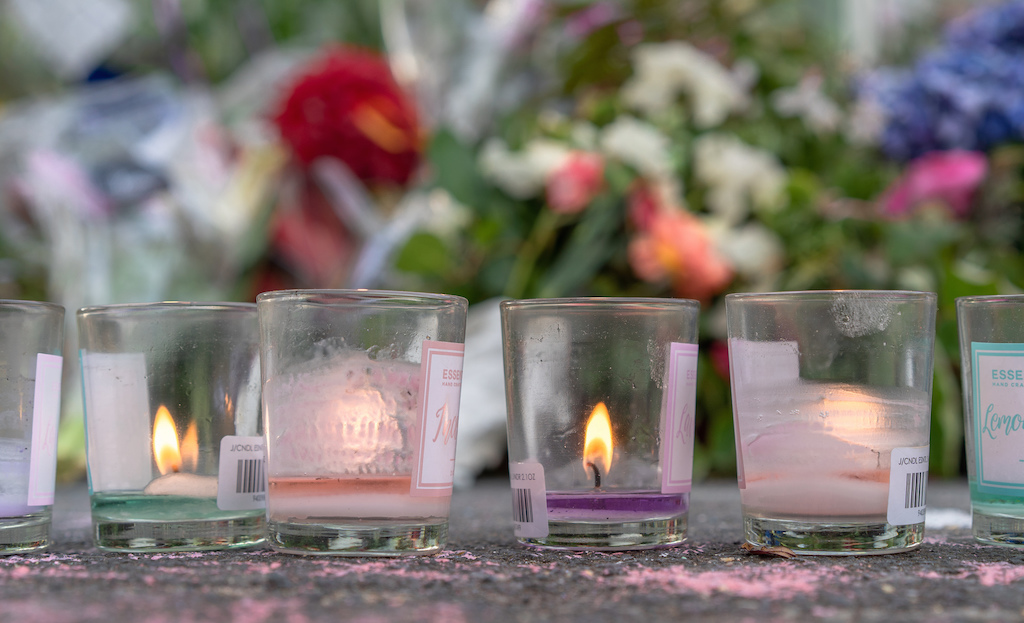In the Christchurch mosque massacre and its aftermath, two forms of racism have been put on display: a far-right Islamophobia that kills Muslims and a mainstream Islamophobia that normalizes the deaths.
Initially, the mass killings barely made the front page of The Globe and Mail: the news was relegated to page four the first day after the atrocity, and the day following confined to a small black box at the top of the front page (which was dominated by a picture of Finance Minister Bill Morneau, not connected to any pressing news story). Even the car advertisement at the bottom was given more space on the front page than the planned and targeted gunning down of Muslims in prayer (the death toll at the time was 49 and has since risen to 50).
While the shootings were allocated greater prominence in the paper following widespread criticism of The Globe‘s coverage, they have primarily been framed as a problem of gun control — not the white supremacist ideology of the man wielding the weapon.
On the CBC’s website, the top story the morning after the massacre was about corruption in American college admissions, and two days later about “three Montrealers who choose to wash dishes for a living.”
What a marked and devastating contrast to the wall-to-wall coverage dedicated to far less fatal acts of violence committed by Muslims abroad. By three days after the mosque attacks, they had already virtually disappeared from the online homepages of Canada’s two national mainstream newspapers, The Globe and Mail and National Post. While the Boston Marathon bombing (which killed three people) was memorialized in Canadian media on its one-year anniversary, will anyone in Canada remember the carnage at Christchurch one year from now?
As the eminent American historian Howard Zinn observed in A People’s History of the United States:
“Outright lying or quiet omission takes the risk of discovery which, when made, might arouse the reader to rebel against the writer. To state the facts, however, and then to bury them in a mass of other information is to say to the reader with a certain infectious calm: yes, mass murder took place, but it’s not that important.”
Media devaluations have no power to diminish Muslims’ inherent humanity — but they unquestionably imperil our safety.
The marginalization of the anti-Muslim killings in New Zealand is part of a Canadian public discourse that consistently serves to minimize the presence and extent of racism and white supremacy.
In its Christchurch coverage, for instance, The Globe and Mail included a piece about threats made against an Alberta mosque in a Yellow Vests Canada Facebook group, but conveyed the impression that this was a one-off incident. It completely neglected to mention that racist diatribes, conspiracy theories, and death threats are pervasive in Yellow Vests Canada’s social media platforms and protests — and that the group itself is not simply an “advocate for free speech and Canadian sovereignty,” as it was described, but a vehicle for extreme-right organizations like the Three Percenters militia, Soldiers of Odin, and World Coalition Against Islam.
Such erasures have enabled Conservative leader Andrew Scheer to be elevated as Canada’s potential “moral leader” by opinion commentators, and to outstrip Justin Trudeau and Jagmeet Singh as the “most ethical federal party leader” in recent opinion polls — even as Scheer continues to brazenly pander to the far-right by tweeting support for the yellow vests’ United We Roll convoy, and then speaking at their Ottawa rally alongside white supremacist Faith Goldy.
The obscuring of racist ideology sustains the popular fiction that acts of white supremacist violence, like those at Christchurch, are “senseless.” In fact, they are a manifestation of a prevailing common sense depicting Muslims and other racialized communities as inherently dangerous and therefore disposable.
This deeply entrenched and highly toxic common sense is propagated by state agencies like Public Safety Canada, which insists that “the principal terrorist threat to Canada continues to stem from … violent Sunni Islamist ideology” and that far-right “racism, bigotry, and misogyny … ultimately do not usually result in criminal behaviour or threats to national security” — even though far-right and white-supremacist ideologues have been responsible for more than nine times as many deaths as Muslim extremists have in Canada since 2001 (at least 19, as compared to two).
While Muslims are stigmatized as a source of regular violence by terroristic freaks, acts of racist violence are explained away as freak occurrences by regular Canadians.
Alexandre Bissonnette’s 2017 Quebec mosque mass shooting, for example, was deemed “strictly personal and non-ideological,” and so not “terrorism,” by the Quebec Superior Court last month.
And Toronto lawyer Mark Phillips was spared criminal punishment last April for his baseball bat attack on a Latino family he accused of being “ISIS”; although Phillips cracked the ribs of one of his victims, his behaviour was dismissed by the judge as “marijuana-induced psychosis.”
Contrast this with the treatment of Syrian immigrant Rehab Dughmosh, who swung a golf club and a knife at Canadian Tire employees while suffering psychotic delusions. She caused no significant injury, but was charged with 14 terrorism offences and sentenced to seven years’ imprisonment in February.
Through such disparities, the racist violence of white men comes to be treated like white noise: a random, meaningless nuisance that blends into the background; a fact of life not to be eradicated but endured, perhaps by blocking our ears to the disturbance.
The persistent, willful refusal to hear it is itself a form of complicity.
Azeezah Kanji is a legal researcher and writer based in Toronto.
Photo: Mark McGuire/Flickr
Help make rabble sustainable. Please consider supporting our work with a monthly donation. Support rabble.ca today for as little as $1 per month!





